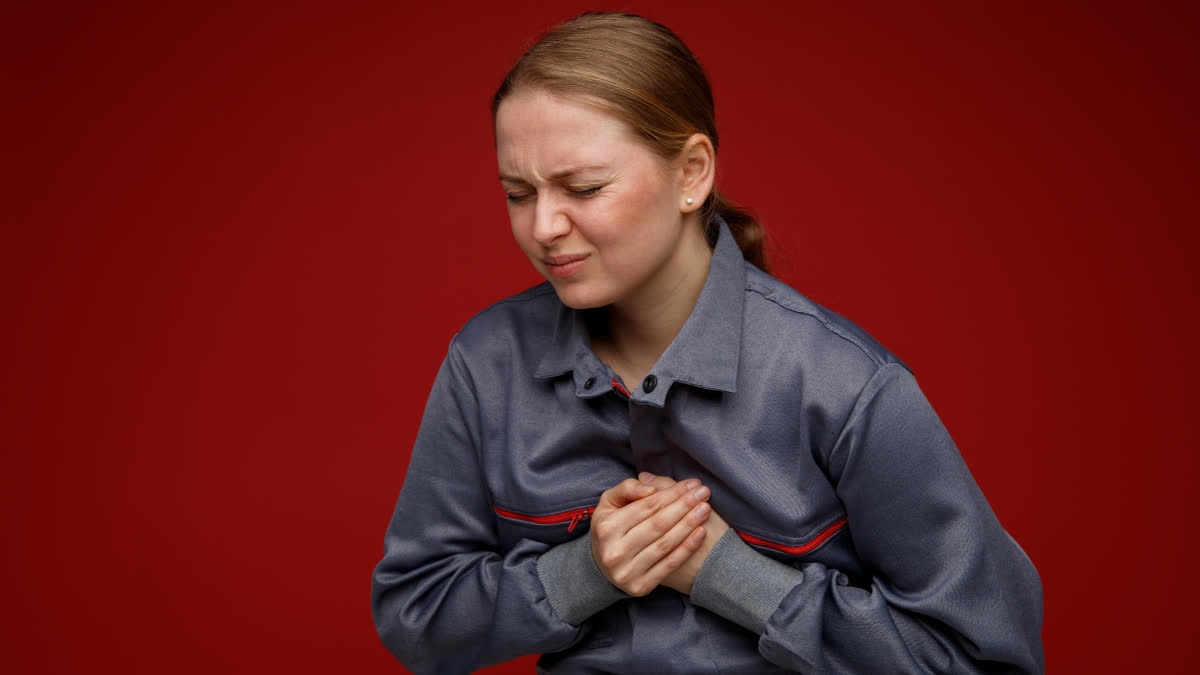Heart disease is a leading cause of death among women, yet many remain unaware of the unique ways it can present in their bodies. While chest pain is a common symptom, women frequently experience additional or entirely different signs that can be mistaken for less severe conditions.Heart attacks are often thought of as sudden and dramatic, but for women, the symptoms can be subtler and sometimes overlooked. Unlike men, who typically experience crushing chest pain, women often display less obvious signs. Knowing these symptoms can save lives by getting into quicker action and medical intervention.
According to Dr. Bipeenchandra Bhamre, consultant cardiac surgeon at Sir H.N. Reliance Foundation Hospital and Research Centre in Mumbai says, "Women's experience with heart attacks can be vastly different from men's, as their symptoms may not always fit the stereotypical chest pain and discomfort. Women are more likely to have atypical symptoms."
He further adds that most times, the symptoms go unnoticed by women which often lead to misdiagnosis or delayed treatment, putting women at a higher risk of complications. "Women tend to downplay their symptoms or delay seeking medical attention compared to men. Societal norms and expectations may contribute to this hesitation in seeking help for potential heart attack symptoms," says Dr. Bhamre.
This calls for a greater awareness and education specifically targeting women about their unique risk factors for heart disease. "One key factor is the presence of autoimmune diseases, such as lupus or rheumatoid arthritis, which can increase inflammation in the body and affect the health of blood vessels," adds the doctor and points out that hormonal changes during menopause can also lead to a decrease in estrogen levels, which may contribute to an increased risk of heart disease.
Additionally, Mental health issues like depression and chronic stress can also play a significant role in increasing the likelihood of heart attacks in women. Dr. Ashish Mishra, Consultant Interventional Cardiologist, Wockhardt Hospitals in Mumbai says women are usually at lower risk of CAD than age-matched men during their reproductive years. "But this advantage disappears after menopause. The risk of CVD is higher in the postmenopausal period. With increasing age, the beneficial effects of estrogen on the vasculature wanes. Lower levels of estrogen and progesterone after menopause are believed to partially explain the increased incidence of CAD in women after menopause," explains Dr. Mishra.
Additionally, the doctor says, the menopause transition is associated with the development of central adiposity, insulin resistance, and a pro-atherogenic lipid profile.
Common symptoms of heart attack in women
Chest discomfort: Not always severe, it may feel like pressure, squeezing, or fullness.
Shortness of breath: Often occurring with or without chest pain, this can feel like you have run a marathon without moving.
Nausea or vomiting: Misdiagnosed as stomach trouble, nausea is a common but underestimated symptom.
Unusual fatigue: Extreme tiredness, even after simple tasks, could be a red flag.
